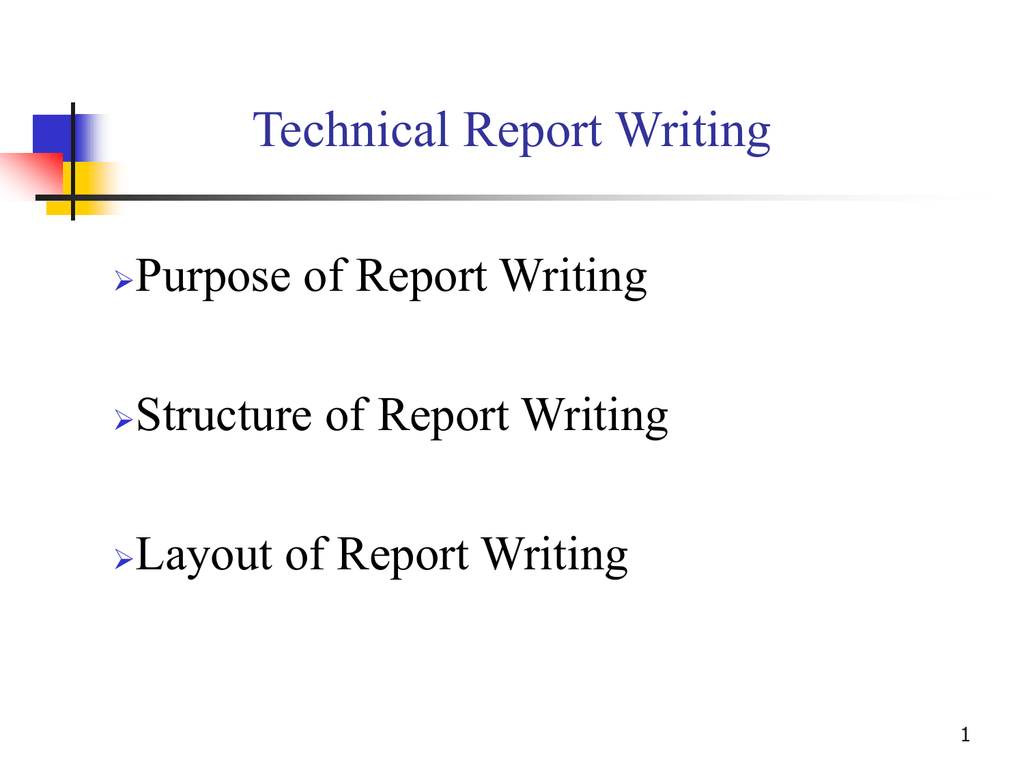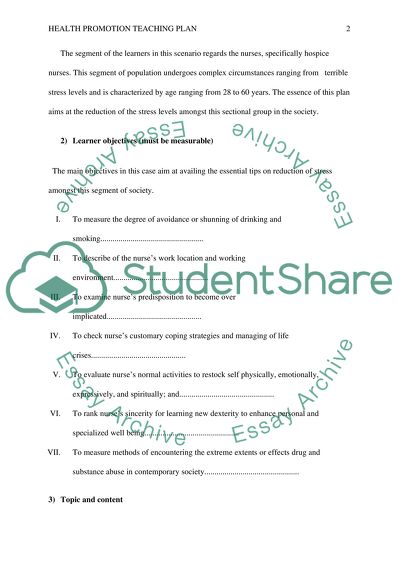
11 rows · 2 Structure. A technical report should contain the following sections; Section. Details. Title The body of a technical report is structured according to the needs of your reader and the nature of the project. The writer decides how to structure it and what to include. To help, ask yourself: What does the reader need to know first? What is the most logical way to develop the story of the project? There are 8 sections that make up the technical report: Title page; Abstract; Table of contents; Introduction; Body of the report; Conclusions; References; Appendices (if needed)
The structure of technical reports
Download pdf version for print. A technical report is a formal report designed to convey technical information in a clear and easily accessible format. It is divided into sections which allow different readers to access different levels of information. This guide explains the commonly accepted format for a technical report; explains the purposes of the individual sections; and gives hints on how to go about drafting and refining a report in order to produce an accurate, professional document.
For technical reports required as part of an assessment, the following presentation guidelines are recommended. There are some excellent textbooks contain advice about the writing process and how to begin see Section Here is a checklist of the main stages. the listing of structure of technical report writing textbooks in Section 16 contains all this information in the correct format.
Who is going to read the report? In professional contexts, the readers might be managers, clients, project team members, structure of technical report writing. The answer will affect the content and technical level, and is a major consideration in the level of detail required in the introduction.
Begin writing with the main text, not the introduction. Follow your outline in terms of headings and subheadings.
Let the ideas flow; do not worry at this stage about style, spelling or word processing. If you get stuck, go back to your outline plan and make more detailed preparatory notes to get the writing flowing again. Make rough sketches of diagrams or graphs. Keep a numbered list of references as they are included in your writing and put any quoted material inside quotation marks see Section Write the Conclusion next, followed by the Introduction.
Do not write the Summary at this stage. This is the stage at which your report will start structure of technical report writing take shape as a professional, technical document. In revising what you have drafted you must bear in mind the following, important principle;, structure of technical report writing. During year 1, term 1 you will be learning how to write formal English for technical communication. This includes examples of the most common pitfalls in the use of English and how to avoid them.
Use what you learn and the recommended books to guide you. Most importantly, when you read through what you have written, you must ask yourself these questions. It is often the case that technical information is most concisely and clearly conveyed by means other than words, structure of technical report writing.
Imagine how you would describe an electrical circuit layout using words rather than a circuit diagram. Here are some simple guidelines;, structure of technical report writing. The appearance of a report is no less important than its content. An attractive, clearly organised report stands a better chance of being read.
Use a standard, 12pt, font, such as Times New Roman, for the main text. Use different font sizes, bold, italic and underline where appropriate but not to excess.
Too many changes of type style can look very fussy. Use heading and sub-headings to break up the text and to guide the reader. They should be based on the logical sequence which you identified at the planning stage but with enough sub-headings to break up the material into manageable chunks. The use of numbering and type size and style can clarify the structure as follows. Whenever you make use of other people's facts or ideas, you must indicate this in the text with a number which refers to an item in the list of references.
Any phrases, sentences or paragraphs which structure of technical report writing copied unaltered must be enclosed in quotation marks and referenced by a number. Material which is not reproduced unaltered should not be in quotation marks but must still be referenced. It is not sufficient to list the sources of information at the end of the report; you must structure of technical report writing the sources of information individually within the report using the reference numbering system.
Structure of technical report writing that is not referenced is assumed to be either common knowledge or your own work or ideas; if it is not, then it is assumed to be plagiarised i. you have knowingly copied someone else's words, facts or ideas without reference, passing them off as your own. This is a serious offence. If the person copied from is a fellow student, then this offence is known as collusion and is equally serious.
Examination boards can, and do, impose penalties for these offences ranging from loss of marks to disqualification from the award of a degree.
This warning applies equally to information obtained from the Internet. It is very easy for markers to identify words and images that have been copied directly from web sites. If you do this without acknowledging the source of your information and putting the words in quotation marks then your report will be sent to the Investigating Officer and you may be called before a disciplinary panel. Your report should now be nearly complete with an introduction, main text in sections, conclusions, properly formatted references and bibliography and any appendices.
Now you must add the page numbers, contents and title pages and write the summary. The summary, with the title, should indicate the scope of the report and give the main results and conclusions, structure of technical report writing. It must be intelligible without the rest of the report. Many people may read, and refer to, a report summary but only a few may read the full report, as often happens in a professional organisation.
This refers to the checking of every aspect of a piece of written work from the content to the layout and is an absolutely necessary part of the writing process. You should acquire the habit of never sending or submitting any piece of written work, from email to course work, without at least one and preferably several processes of proofreading.
In addition, it is not possible for you, structure of technical report writing, as the author of a long piece of writing, to proofread accurately yourself; you are too familiar with what you have written and will not spot all the mistakes, structure of technical report writing. When you have finished your report, and before you staple it, you must check it very carefully yourself.
You should then give it to someone else, e. one of your fellow students, to read carefully and check for any errors in content, style, structure and layout. You should record the name of this person in your acknowledgements. School Office: School of Engineering and Informatics, University of Sussex, Chichester 1 RoomFalmer, Brighton, BN1 9QJ ei sussex.
uk T 67 School Office opening hours: Monday — Wednesday: — and — Thursday and Friday closed. School Office location [PDF 1. Skip to content Accessibility A-Z Staff search Contact us Email External website Site People by structure of technical report writing. Schools ITS Library Professional services.
Schools and services Engineering and Informatics For students Engineering and Design Study guides Guide to Technical Report Writing. Back to previous menu Study guides Guide to Laboratory Writing Guide to Technical Report Writing. Site map. A-Z Staff search Contact us Email External website Privacy Cookies Copyright ©University of Sussex. Must include the title of the report. Reports for assessment, where the word length has been specified, will often also require the summary word count and the main text word structure of technical report writing. States the objectives of the report and comments on the way the topic of the report is to be treated.
Leads straight into the report itself. Must not be a copy of the introduction in a lab handout. Divided into numbered and headed sections. These sections separate the different main ideas in a logical order. Details of published sources of material referred to or quoted in the text including any lecture notes and URL addresses of any websites used. Other published sources of material, including websites, not referred to in the text but useful for background or further reading.
Any further material which is essential for full understanding of your report e. large scale diagrams, computer code, raw data, specifications but not required by a casual reader.
The report must be printed single sided on white A4 paper, structure of technical report writing. Hand written or dot-matrix printed reports are not acceptable. Do not number the title, summary or contents pages, structure of technical report writing. Number all other pages consecutively starting at 1. A single staple in the top left corner or 3 staples spaced down the left hand margin. For longer reports e. year 3 project report binders may be used. Keep them simple.
Draw them specifically for the report. Put small diagrams after the text reference and as close as possible to it. Think about where to place large diagrams. For detailed guidance on graph plotting, see the 'guide to laboratory report writing'. Is a table the best way to present your information? Consider graphs, bar charts or pie charts. Dependent tables small can be placed within the text, even as part of a sentence.
Independent tables larger are separated from the text with table numbers and captions. Position them as close as possible to the text reference. Complicated tables should go in an appendix.
Report Writing - How to write a Report - Format - Example - Blood Donation Camp
, time: 8:49Guide to Technical Report Writing with 3 Examples to Follow | blogger.com

A technical report is simply defined as formal and organized documentation of the process that was performed which is created to communicate to a certain audience important information about the work. You might be interested in status report examples. Technical Report Writing Example 24 rows · Technical report format Divide the document into sections so that the readers can easily There are 8 sections that make up the technical report: Title page; Abstract; Table of contents; Introduction; Body of the report; Conclusions; References; Appendices (if needed)

No comments:
Post a Comment